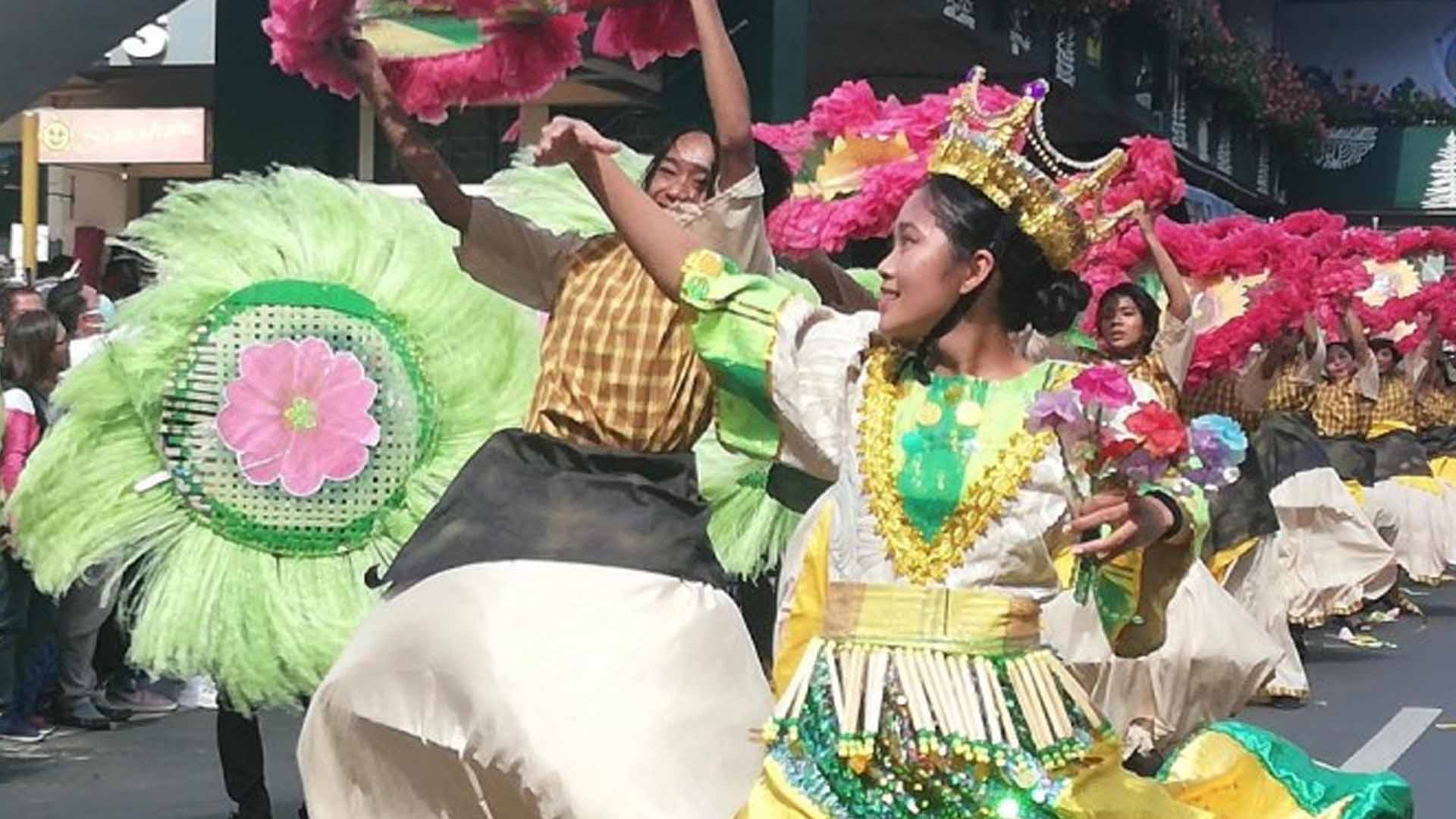After a three-year hiatus, the revival of the Panagbenga Festival this year is proving this city’s resilience from any calamity, the same reason why it was conceptualized nearly 30 years ago.
“After the killer earthquake in 1990, we thought of a festival that the people of Baguio can participate in and they can own which also aims to bring in tourists for the economy to move again,” said Mauricio Domogan, Baguio Flower Festival Foundation Inc. lifetime chairperson, on the sidelines of the street dancing parade on Saturday.
The first festival in 1996 was a one-day event. It was later extended to one week, further expanded to two weeks, then a month.
Domogan said the staging of the festival this year is as important as the first, considering their similar objectives — to make the city rise again and uplift the lives of those affected by the crisis, this time the Covid-19 pandemic.
Domogan, who was mayor at the time the flower festival was born, said “the discussion was what to do to make the city recover, for the city to be visited by the tourists again, an activity that will bring the residents to contribute their time and talent for something that will benefit the whole city”.
Domogan was this city’s mayor from 1992 to 2001 and from 2010-2019, and congressman from 2001 to 2010.
“With the brains of the festival, Atty. Damaso Bangaoet, the idea of having something similar to the Pasadena rose parade in California was thought of. I gave the word panagbenga which is our native dialect that simply means a time for blooming,” he said.
Panagbenga formally opens on Feb. 1 of each year.
The last weekend of the month is slated for the institutional grand parades followed by the closure of the city’s main thoroughfare for the “Session in Bloom” when the Session Road is converted into a stretch of selling and activity area until the following Sunday for the closing program and awarding of winners in the different competitions.
“We never thought it will come to this magnitude where hundreds of thousands of people come to Baguio for the whole duration, with most of them arriving for the grand parades,” Domogan said.
He admitted, however, that the number of visitors who joined the street dancing on Saturday did not breach the pre-pandemic level.
“Our having the festival this year shows our resiliency in any calamity. That despite the challenges, we stand up to show that we will be okay,” Domogan said.
Baguio City had 1.7 million tourist arrivals from January to October 2022, surpassing the 2019 record of 1.2 million visitors.
The festival partially resumed last year sans crowd-drawing activities like the flower-themed floats due to health protocols, luring 45,000 visitors on its final weekend.
Inspiring tradition, culture
Meanwhile, the street dancing competition, one of the festival highlights, once again showed the rich culture, diverse beliefs and colorful traditions of the Cordillerans.
Among the traditions presented was the cañao, a socio-religious ritual where chickens, pigs and/or carabaos are butchered and feasted on as a thanksgiving to their god, Kabunian.
Ikoshin Miguel, whose group performed a dance number depicting the cañao, explained its importance.
“The legend of cañao, o yung pinakaunang rason kung bakit nagkaroon ang Cordillera ng mga cañao na ginagawa bilang tradisyon kahit man may nangyaring masama o may magandang nangyari, positive or negative. Ito kasi is parang ‘yun ‘yung way naming para mag-pray kay Kabunian (This is the story of how cañao started in the Cordillera as part of its tradition, whether its good or bad. This is our way of praying to Kabunian),” she said.
The last part of their performance, Miguel said, showed the weaving tradition of the six provinces of Cordillera.
She added that in performing for the Panagbenga, they want to show other young people from the province that the art of dancing may also be used as an instrument in showing the richness of their culture.
Two other participants, Lovely May Pesiglagan and Henessy Mang-er from Sagada, Mountain Province, expressed pride in their performance, depicting their belief in mythical creatures, which, they said, is a first for the Panagbenga Festival.
“Our performance is about mythical creatures kung saan sa ilog, tradisyon kasi sa amin na magbato muna ng bato sa water before mag-fetch or mag swimming, we’re going to wait 10 minutes para umalis yung mga anito na tinatawag (where it has been our tradition to throw a stone into the river water before we fetch or swim, then wait for about 10 minutes for the unseen creatures to go away),” Pesiglagan said.
Mang-Er said the first concept they thought of was also Kabunian, but they changed their mind since it is a common theme in Panagbenga performances.
Visitors who went to Baguio to witness the Panagbenga events were left in awe of the street dancing parade performers.
Rolan Afilo, who is vacationing from Dubai, said his family purposely went to this city to experience the Panagbenga.
“Very colorful at tsaka yung effort nila amazing. Hindi matatawaran, so we just said that it’s like we’re in Brazil. Ang preparation spectacular and I can say na pinaghandaan ng mga tao dito (their effort is amazing. I say that residents have really prepared for this event),” he said.
The dance groups, mainly composed of young people, said performing their cultural traditions through dances is their way of showing that they love their province and their roots.
EJ Justin Balao and Lea Dodon expressed pride in being Cordillerans.
“Napakasaya namin kasi dati nagka-pandemic, wala ‘yung mga ganitong competition na nasasalihan naming to express our talent. Tsaka mahal namin ang kultura namin (We are so happy because when the pandemic hit the country, the events and competitions stopped so we do not have a venue to show our talents. And also, we love our culture),” Balao said. (PNA)







